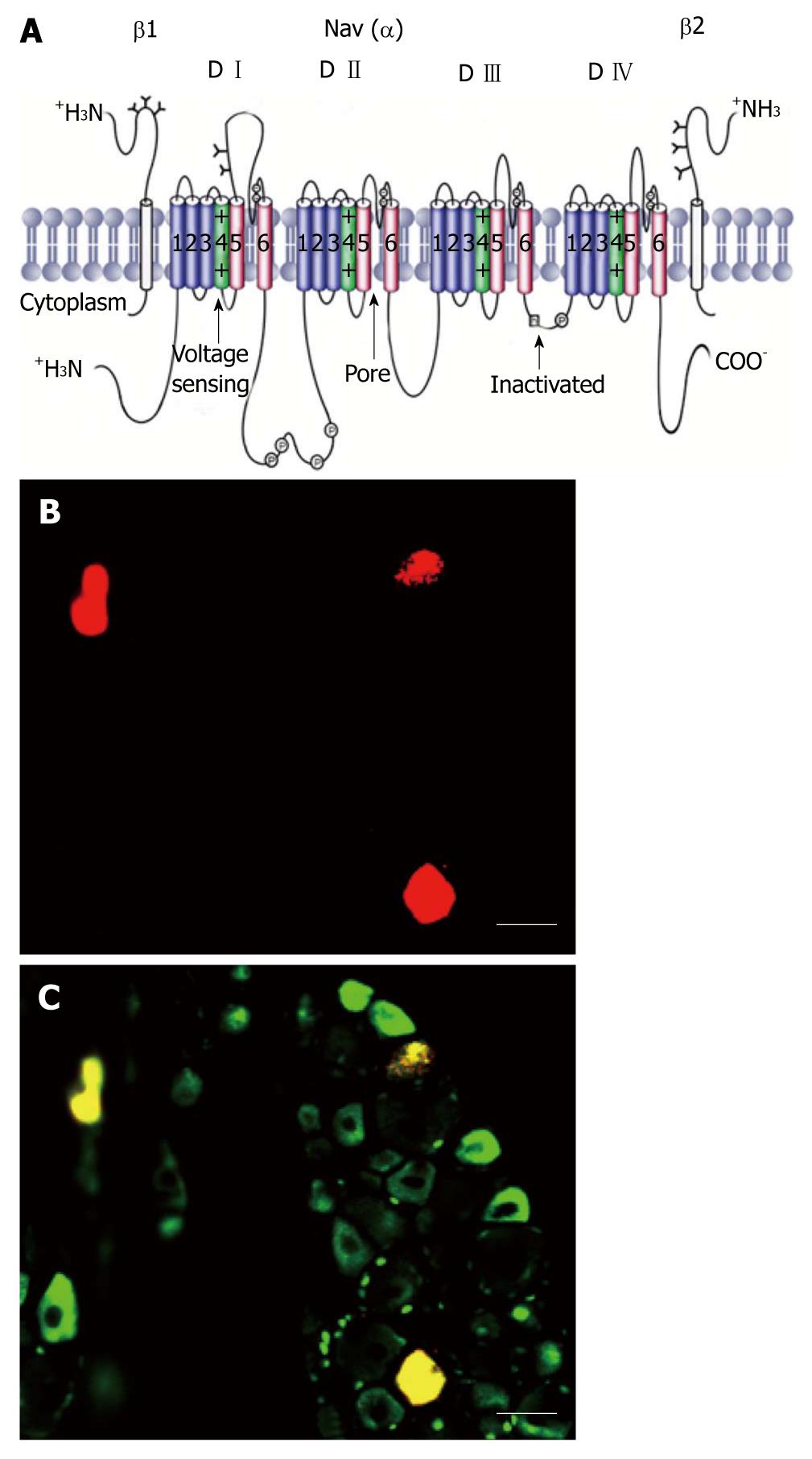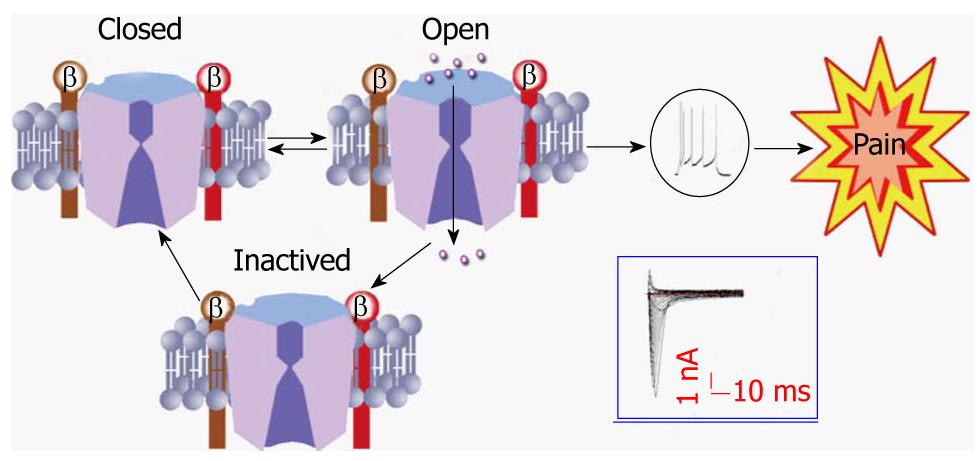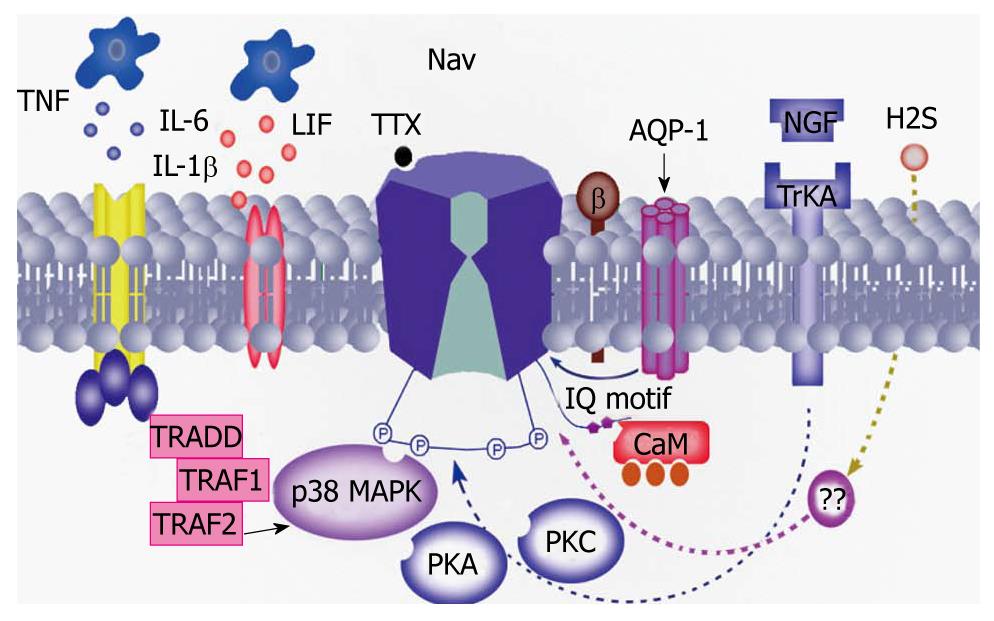Copyright
©2011 Baishideng Publishing Group Co.
World J Gastroenterol. May 21, 2011; 17(19): 2357-2364
Published online May 21, 2011. doi: 10.3748/wjg.v17.i19.2357
Published online May 21, 2011. doi: 10.3748/wjg.v17.i19.2357
Figure 1 Schematic of a voltage-gated sodium channel polypeptide and Nav1.
8 positive colon specific dorsal root ganglion neurons. A: The transmembrane organization includes four domains (D I-D IV) joined by three intracellular loops (L1-L3) and the intracellular N and C termini. Cylinders represent probable α-helical segments. P in circles, sites of demonstrated protein phosphorylation by protein kinase A (PKA) or PKC; green, S4 voltage sensors; h in which square, inactivation particle in the inactivation gate loop (modified, with permission, from Catterall[14]); B: Colon specific dorsal root ganglion neurons labeled by Dil (red); C: Nav1.8 positive neurons (green). Colon specific Nav1.8 positive neurons are stained yellow. Bar = 50 μm for both B and C.
Figure 2 A model showing the three states of the sodium channel.
Tissue damage/inflammation leads to activation of the sodium channel from a closed state. Once activated, sodium ions entered through the channel and evoke the action potential of the cell membrane, eventually producing the sensation of pain. Once the channel becomes inactivated, it must go to a closed state before being activated again. Action potentials and inward currents were recorded from a colon specific dorsal root ganglion neuron from a healthy rat.
Figure 3 Possible mechanisms underlying the modulation of voltage-gated sodium channel activity.
Inflammatory mediators such as nerve growth factor (NGF), prostaglandin (PG) E2, interleukin (IL)-1β may sensitize sodium channels by different intracellular signal transduction pathways such as protein kinase A (PKA), protein kinase C (PKC), mitogen-activated protein kinase and calmodulin (CaM). In addition, a recent study showed that aquaporin (AQP)-1 directly interacted with the sodium channel, thus contributing to the perception of pain[48]. TTX: Tetrodotoxin; LIF: leukemia inhibitory factor; Trk: Tyrosine receptor kinase; TNF: Tumor necrosis factor; TRAF: Tumor necrosis factor receptor-associated factor; TRADD: TNF receptor-associated death domain protein.
- Citation: Qi FH, Zhou YL, Xu GY. Targeting voltage-gated sodium channels for treatment for chronic visceral pain. World J Gastroenterol 2011; 17(19): 2357-2364
- URL: https://www.wjgnet.com/1007-9327/full/v17/i19/2357.htm
- DOI: https://dx.doi.org/10.3748/wjg.v17.i19.2357











